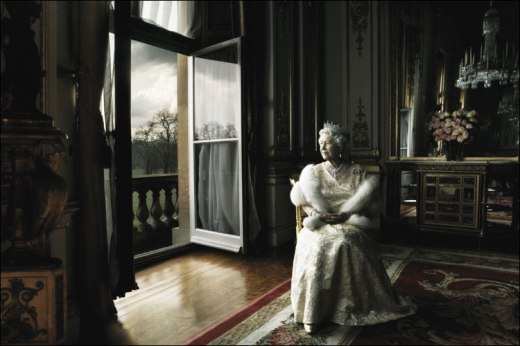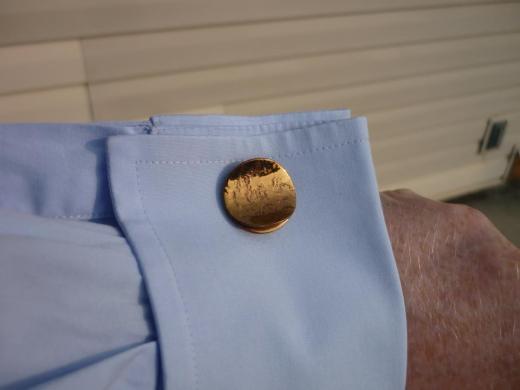There are times when I am reminded about how utterly delicious French can be. There are many terms and expressions in this language that make English look positively impoverished (a prime example would be faire du lèche-vitrine; whereas English speakers merely, and politely, window shop, their French-speaking counterparts indulge in window licking, a description that captures being in the throes of materialistic desire). Words can be beautiful and powerful tools. The only time I’ve fainted in my life happened when I was around 7 years old. I was a hyperactive child and constantly craving attention and creating a maelstrom. One particular day I was running around the house and my mother, never one to refrain from apposite commentary, blurted out in exasperation: “Stop running around like some flibbertigibbet”. I am still not sure whether it was the expended energy or simply the hypnotic quality of this old English word denoting a spirit or fiend, but I was momentarily overcome. In some senses, my life has been punctuated with such moments where the strangeness, beauty, or cadence of words has forged out a pause in my time. One of my absolute Gallic favourite idioms is l’esprit de l’escalier, or staircase wit. This describes the moment when, after the fact, you think of what you should have said in response to someone’s put-down, joke, or unexpected interjection, that retort which would have been perfectly perfect. The idea is that you’re on the staircase on the way out (with reception rooms being traditionally on the upper level of a residence). While in English we have to resort to a long-winded comment such as “Oh I wish I’d thought of that at the time”, French possesses a succinct phrase that is so attractive that it could be taken out on a date.
 Stairs are so much part of the very canvas of our daily lives that we take them without even realizing what we are doing for much of time. It’s interesting that we take stairs rather than use them (using only being employed when it’s an alternative to another route such as an elevator). They have been with us for at least three millennia and make life easier and much more practical, at least for able-bodied people. There are some magnificent staircases and stairwells in existence, such as the sixteenth-century double-helix stone staircase at the Château de Chambord, above, which was probably designed by Leonardo da Vinci. While there are countless examples of attractive, impressive, and large stairways, it is very rare that we would deem one to be ugly; at worst, they would only be practical. Often, otherwise interesting buildings can be let down by uncomplicated and unimaginative stairs but, happily, some designers see this integral item as a challenge, whether it be in the conceptualization, materials used, or simply the detail. I very much like the organic yet modernist design below, of Atmos Studio.
Stairs are so much part of the very canvas of our daily lives that we take them without even realizing what we are doing for much of time. It’s interesting that we take stairs rather than use them (using only being employed when it’s an alternative to another route such as an elevator). They have been with us for at least three millennia and make life easier and much more practical, at least for able-bodied people. There are some magnificent staircases and stairwells in existence, such as the sixteenth-century double-helix stone staircase at the Château de Chambord, above, which was probably designed by Leonardo da Vinci. While there are countless examples of attractive, impressive, and large stairways, it is very rare that we would deem one to be ugly; at worst, they would only be practical. Often, otherwise interesting buildings can be let down by uncomplicated and unimaginative stairs but, happily, some designers see this integral item as a challenge, whether it be in the conceptualization, materials used, or simply the detail. I very much like the organic yet modernist design below, of Atmos Studio.
The designer explained this bold design as follows, and I quote this since it is so poetic:
The stair is a continuation and intensification of the simple graphic skirting board lines that trace their way through the house. As they turn the corner into the stair void, they expand like a genie released from a lamp, curling and separating and bifurcating from the wall to form the delicate edge of the stair treads, lifting into the air to rise as the veil of the balustrade. This veil hangs gently from above as a series of thin paired threads, softly pulled back at the entry to allow movement past, gently splaying around the corner to meet and carry the arriving visitor onwards and upwards.
It seems to me that poets are rarely architects, though if there were more who were, we would undoubtedly be living in a more dangerous world. Given the ubiquity of stairs in our lives, they have long functioned as a metaphor. Freud somewhat inevitably held that dreaming about stairs had erotic connotations, explaining that the feat of climbing and descending stairs imitated the rhythm of making love, though this seems to ignore the fact that we are either going up or going down; rarely would we dream of doing both actions. Stairs have more tie-ins with the symbolism of going places, achieving things, since we take steps in our jobs and relationships, we climb the ladder of ambition, we social climb, and we take one step at a time. Conversely, we can make false steps and fall down the spiral. There is something quite startling as well as exhilarating about looking down from a tall staircase. It is certainly a reminder about the frailty of our mortal coils. Hitchcock used a staircase to great effect in Vertigo (1958), a masterpiece whose lead character, Scottie, played by the demure James Stewart, is a man inflicted with the psychological defects of obsession and stalking coupled with the physical one of acrophobia. There are two iconic stair sequences (here and here), both involving the same staircase and the director captures Scottie’s terror on his sweat-spotted face and a camera zoom that is now called the Vertigo Effect. Perhaps the most famous, and certainly the most disturbing, use of stairs in cinema is the Odessa Steps sequence of Eisenstein’s Battleship Potemkin (1925), depicting a massacre of innocent civilians, including the elderly and babies, by the Czar’s troops. The clip has been enormously influential in cinema and art, not to mention as a propaganda tool. The atrocity itself was an artistic liberty; no such outrage ever took place.
 Stairs have long featured in spiritual symbolism to represent the path towards salvation and God, separation and sin being only a false step away. One of the most curious episodes in the Old Testament is Jacob’s Ladder, the dream that Jacob experiences of angels climbing and descending a ladder (Genesis 28:10-19). A ladder is, of course, nothing than a vertical, simple set of stairs. Jacob needs God to provide an interpretation of the dream the following day -not a Freudian one- and it concerns the foundation of the Promised Land. Despite the fact that stairs are used for the two-way process of going up and coming down, the English word derives from the proto-German word staigri meaning to climb, a sense also retained when we say a “flight of stairs”. Since it comes from the Barbarian tribes of Europe, it is obvious to see why they wanted to concentrate on reaching goals, rather than coming down. The same sense of overcoming and mastering the stairs is to be found in the Latin scala, from which we have acquired the term to scale something or the variations to be found in a musical scale.
Stairs have long featured in spiritual symbolism to represent the path towards salvation and God, separation and sin being only a false step away. One of the most curious episodes in the Old Testament is Jacob’s Ladder, the dream that Jacob experiences of angels climbing and descending a ladder (Genesis 28:10-19). A ladder is, of course, nothing than a vertical, simple set of stairs. Jacob needs God to provide an interpretation of the dream the following day -not a Freudian one- and it concerns the foundation of the Promised Land. Despite the fact that stairs are used for the two-way process of going up and coming down, the English word derives from the proto-German word staigri meaning to climb, a sense also retained when we say a “flight of stairs”. Since it comes from the Barbarian tribes of Europe, it is obvious to see why they wanted to concentrate on reaching goals, rather than coming down. The same sense of overcoming and mastering the stairs is to be found in the Latin scala, from which we have acquired the term to scale something or the variations to be found in a musical scale.
One more obvious stair symbol occurs at the beginning of the Mass. Before starting the Mass proper, the celebrant recites what are known as the Prayers at the Foot of the Altar before he takes the three steps up to the altar (the right foot must be the first to ascend). The image above was taken during a High Mass at Blackfriars Hall, Oxford. During these prayers, contrition is expressed for being unworthy at being a participant in the sacred mysteries that are about to take place. The prayers themselves are mainly scriptural and are very beautiful, with a psalm and the Confiteor being said. The Confiteor is where the “mea culpa” is intoned thrice and the breast struck with the head bowed, a surprisingly haunting prayer and act. The whole section is a dialogue in which the cleric sets out how unworthy he is to stand at the altar of sacrifice; yet, go to it he must, since God overlooks transgressions and forgives. I like the sense of all of this; we do not dwell in Lent but head for Easter, though there are many religious people who are somewhat happy to remain steadfastly in Lenten rigour and set aside the splendour of beauty, truth, and grace. The symbolism of these prayers is overwhelmingly rich and the act of the priest preparing to climb the steps and the moment he does so become endowed with a higher purpose. The moment has its secular equivalents too; certain leaders and monarchs are often led to a raised dais or chair (or throne) on assuming their responsibilities. And who could forget the fairy-tale balls in which stairs play a crucial part? Cinderella’s descending the stairs into the ballroom denotes her social ascent out of the ashes of the kitchen. And we should rather hope for this than the endless frustration of Escher’s never-ending, and destination-less, stairways.
Today’s cufflinks are by my very favourite designer, Guy Vidal, a Quebec pewtersmith who was active in the late 1960s and early 1970s. He used a pewter and silver mix of metal and injects great imagination into his work. I have 23 pairs by Vidal, representing half of the cufflinks he ever produced, though I’ve only blogged on one other pair before, here. They’re really rather lovely, with different sizes of square-shapes set at differing heights, embellished with a variety etched or plain tops. The faces suggest stepping stones to me, which mentally led me to stairs. These cerebral connections are actually not unlike stairs, taking us from one place to another, but leaving the opportunity of return, possibly with new knowledge and experiences, tantalizingly and eternally open to us.













